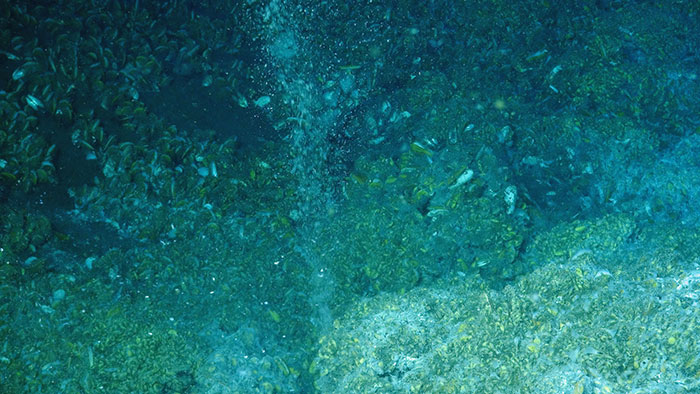
SAN FRANCISCO — Seafloor-dwelling bacteria may hitch a ride on methane bubbles seeping from deep-sea vents, preventing the methane from reaching the atmosphere by eating it up, new research suggests.
The findings, presented here today (Dec. 9) at the annual meeting of the American Geophysical Union, could help explain how such huge amounts of the greenhouse gas methane are belched from the ocean floor, yet somehow never reach the atmosphere.
"Above these methane seeps, you have these bubbles released from the sediment and you can see a higher abundance of these microbes in the water column," said study co-author Oliver Schmale, a geologist and marine chemist at the Leibniz Institute for Baltic Sea Research in Germany. "The microbes consume methane from these seeps before it escapes into the atmosphere." [Earth in the Balance: 7 Crucial Tipping Points]
Potent warmer
Methane is a potent greenhouse gas, and huge reserves of it are buried beneath the oceans. Many scientists worry that if the oceans warm enough, these huge troves of methane could be released from their deep-sea storage and released into the atmosphere, fueling a huge spike in temperatures.
While much of the methane is locked in an inactive form, at shallower depths, bubbles of methane naturally seep up from mud volcanoes and other cracks in the ocean floor. Yet somehow, very little of this methane reaches the atmosphere.
Schmale and his colleagues proposed that bacteria living in the water column traveled on the bubbles, breaking down the methane before it had a chance to reach the surface. To test that idea, a team of scuba divers placed a device that collected tiny bubbles of methane as they floated from an oil and gas exploration field off the shore of Santa Barbara, Calif. The bubble catcher trapped the gas bubbles in a cylinder full of ultra-pure water. The gas bubbles rose to the top of the tube, while the particles attached to them stayed in the water. As a control, the researchers did the same experiment, but trapped artificial bubbles that weren't in contact with the seafloor.
Get the world’s most fascinating discoveries delivered straight to your inbox.
Bubble elevator
The team then flushed out the water and collected the particles that remained on a filter. They then looked for gene signatures of methane-munching bacteria and archaea (single-celled organisms that make up one of life's kingdoms).
The team found that about 160 methane-oxidizing bacteria hitched a ride on the outside of each bubble, munching on the methane as they traveled. Each bubble also carried over 44,000 cells of other types. By contrast, the control bubbles didn't contain these organisms.
The new findings could help explain how large amounts of methane are broken down before reaching the ocean's surface. The bubble bacterial elevator could also mean that the ocean could have a built-in mechanism to deal with large releases of methane.
"If you have a direct injection of these microbes into the affected water column, you have a direct sink," Schmale told LiveScience.
Follow Tia Ghose on Twitter and Google+. Follow OurAmazingPlanet @OAPlanet, Facebook and Google+. Original article at LiveScience's OurAmazingPlanet.

Tia is the editor-in-chief (premium) and was formerly managing editor and senior writer for Live Science. Her work has appeared in Scientific American, Wired.com, Science News and other outlets. She holds a master's degree in bioengineering from the University of Washington, a graduate certificate in science writing from UC Santa Cruz and a bachelor's degree in mechanical engineering from the University of Texas at Austin. Tia was part of a team at the Milwaukee Journal Sentinel that published the Empty Cradles series on preterm births, which won multiple awards, including the 2012 Casey Medal for Meritorious Journalism.


